SFX
by Martin Willey
Special effects (SFX or just FX) are as old as cinema, and many techniques have direct roots in stage magic (film pioneer Georges Méliès was originally a stage magician).
The British film industry was particularly strong in special effects. A lot of this was thanks to Alexander Korda and his brothers, Hungarian directors who came to the UK in the 1930s to make a series of epic influential movies. Korda brought a Hollywood SFX expert, Ned Mann, to the UK; the British Board of Trade insisted that British technicians should be employed and given training. The British artist Walter Percy "Pop" Day would then take over Korda's special effects. After world war 2, a new generation of artists maintained the strong effects industry, several trained by Pop Day and Ned Mann. These included Wally Veevers, Tom Howard, Peter Ellenshaw (Day's stepson, who in the 1950s went to the US to work for Disney) and Les Bowie. In the 1950s, Les Bowie started his own company, making effects for, among others, the Hammer horror films. Bowie employed Derek Meddings, and later Brian Johnson. In the 1960s Meddings began to work for Gerry and Sylvia Anderson, with Johnson also joining him. The talent of British technicians drew Stanley Kubrick to make 2001: A Space Odyssey (1968) in Britain, employing Johnson.
For Space: 1999 Brian Johnson was able to draw on his experiences working with Les Bowie, Derek Meddings, and, on 2001, with Wally Veevers and Douglas Trumbull.
In 1975, as Brian Johnson finished the first series of Space: 1999, he was visited by two American film-makers, Gary Kurtz and George Lucas, who were preparing their own science fiction film, to be filmed in Britain. They wanted to see the effects that Johnson was making for Space: 1999, and offered him the job of SFX supervisor. But Johnson had committed to Space: 1999. Lucas had also asked Douglas Trumbull, and eventually employed Trumbull's assistant, John Dykstra. Star Wars (1977) was able to use cheap integrated circuits to control the cameras (second hand VistaVisions, built in the 1950s), which would revolutionise special effects.
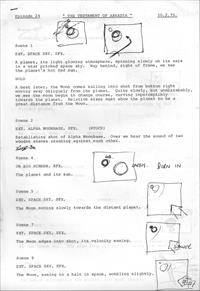
The first step was to identify every SFX scene from the shooting script and annotate it with notes and sometimes sketches.
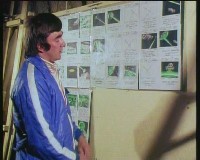
All the SFX scenes were then turned into storyboards, illustrating every SFX shot in the episode. More details
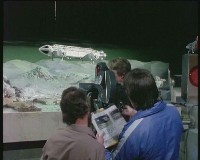
Filming a miniature model and set with the storyboard
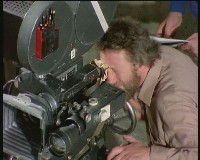
Most shots were filmed with a 35mm Mitchell camera, usually running at high speed. More details
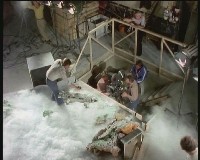
Filming on stage 4, the ballroom stage at Bray Studios. This stage had a sunken section for the camera. They would also film on the larger stage 3, a purpose built stage at Bray.
Copyright Martin Willey